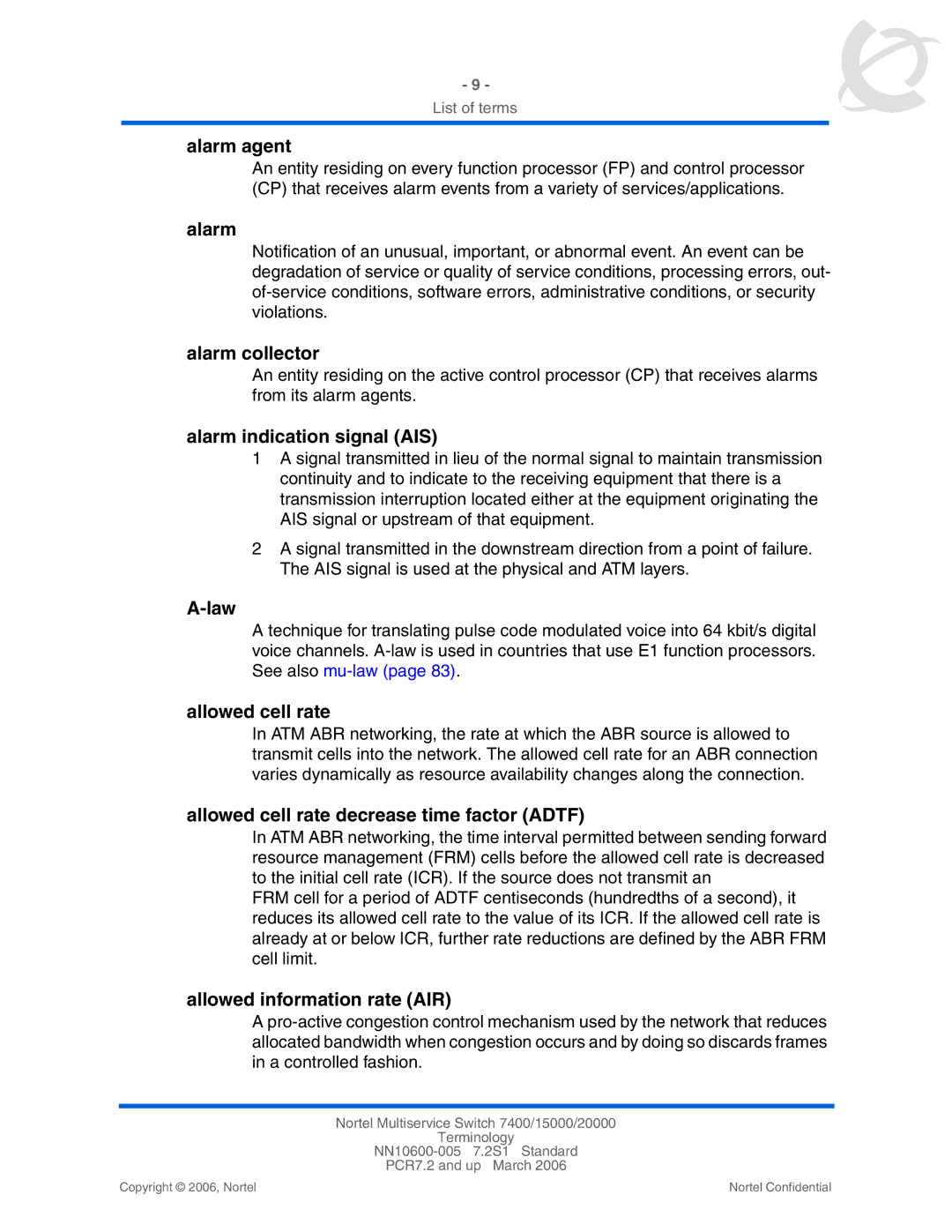
- 9 -
List of terms
alarm agent
An entity residing on every function processor (FP) and control processor (CP) that receives alarm events from a variety of services/applications.
alarm
Notification of an unusual, important, or abnormal event. An event can be degradation of service or quality of service conditions, processing errors, out-
alarm collector
An entity residing on the active control processor (CP) that receives alarms from its alarm agents.
alarm indication signal (AIS)
1A signal transmitted in lieu of the normal signal to maintain transmission continuity and to indicate to the receiving equipment that there is a transmission interruption located either at the equipment originating the AIS signal or upstream of that equipment.
2A signal transmitted in the downstream direction from a point of failure. The AIS signal is used at the physical and ATM layers.
A-law
A technique for translating pulse code modulated voice into 64 kbit/s digital voice channels.
allowed cell rate
In ATM ABR networking, the rate at which the ABR source is allowed to transmit cells into the network. The allowed cell rate for an ABR connection varies dynamically as resource availability changes along the connection.
allowed cell rate decrease time factor (ADTF)
In ATM ABR networking, the time interval permitted between sending forward resource management (FRM) cells before the allowed cell rate is decreased to the initial cell rate (ICR). If the source does not transmit an
FRM cell for a period of ADTF centiseconds (hundredths of a second), it reduces its allowed cell rate to the value of its ICR. If the allowed cell rate is already at or below ICR, further rate reductions are defined by the ABR FRM cell limit.
allowed information rate (AIR)
A
Nortel Multiservice Switch 7400/15000/20000
Terminology
PCR7.2 and up March 2006
Copyright © 2006, Nortel | Nortel Confidential |
